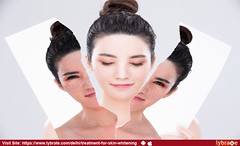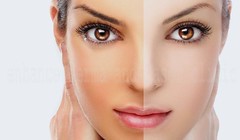Media representation, especially government sponsored media platforms, will influence audience perceptions by legitimizing particular concepts.The annual Chinese Gala is a celebratory New Year Show, produced by the Chinese central broadcasting station, and is an essential part of the lunar year celebration routine for the majority of Chinese people.
When I was watching a clip of the Gala this year, I observed a unique phenomenon – all hosts and performers, both male and female, have extremely light skin colors. This made me wonder, is the national show reinforcing Chinese people’s desire of a light skin color?
A light skin color is what millions of girls dream of in many East Asian countries. The pursuit of a pale skin color originates from historical as well as social reasons. For example, in ancient China, a light skin color is “an indicator of socioeconomic status”, as only people from the upper-class could avoid doing physical labor in open fields.
Other than this historical cause, pale-skin girls, in modern Chinese societies, usually enjoy privileges compared to their dark-skin fellows. These privileges include more attention and more compliments from parents, friends and teachers. Having a light skin color may also facilitate women in gaining sexual attraction, achieving higher social status, and increasing self-esteem. Similar phenomenons can also be found in Korean, Japanese, and Indian cultures, further contributing to people’s chasing of a light skin color.
Unfortunately, these lighter-skin privileges have negative social consequences. A study published in the Journal of the European Academy of Dermatology and Venereology shows that 59.5% of respondents with dark skin tones and 43.6% of respondents with light skin tones believe in the power of lighter skin tones in “getting a better job opportunity” (AlGhamdi, 2010). This shows that skin color is not just a person’s physical trait, but also a potential factor that may influence people’s careers.
This is undesirable because people are then consciously trained to value their skin color. Imagine if, starting from a young age, people are surrounded by TV programs in which all actors and actresses have pale skin tone; they will associate light skin color with popularity and beauty, and may discriminate against peers who have a dark skin tone.
Meanwhile, businesses, especially those in the beauty industry, have been able to exploit the desire of a pale skin. Every year, cosmetic brands in China, Korea, and Japan produce numerous skin whitening products, creating a huge, lucrative market.
According to the Guardian, traditional skin whitening creams usually contain hydroquinone or mercury, which could cause skin damage and even kidney malfunction. Although these ingredients are banned in many western countries, some of them can still be purchased through the internet. In recent years, skin whitening products are not just limited to cream or facial masks, but extend to drinks and pills.
In addition, the ways businesses advertise their skin whitening products are reinforcing people’s desire for a pale skin color. More specifically, the slogans and pictures in their advertising campaigns can easily elicit people’s fear of being unpopular and undesirable by having dark skin.
For instance, Watsons, the major health and beauty care company in Hong Kong, has advertised for their skin whitening facial masks with a slogan that states, “Whatever keeps my skin the purest white.” This slogan establishes the idea that a “purest white” skin needs to be obtained through “whatever” means. This is problematic because: one, it does not recognize their products’ potential negative consequences on their users’ health; and two, it manipulates people into buying products that they do not even need in the first place.

by Lybrate India
People should be aware of how beauty products are marketed, and recognize the underlying messages that result in negative consequences.
Looking back at the Chinese Gala, the hosts and performers’ pale skin tones reflects the society’s beauty standard and is undoubtedly further reinforcing the desirability of a light skin tone. As a program produced by the national media, the Chinese Gala should teach, especially to the younger generation, that skin color does not determine a person’s value. People should be measured by their actions and not their appearances.

Comments are closed.